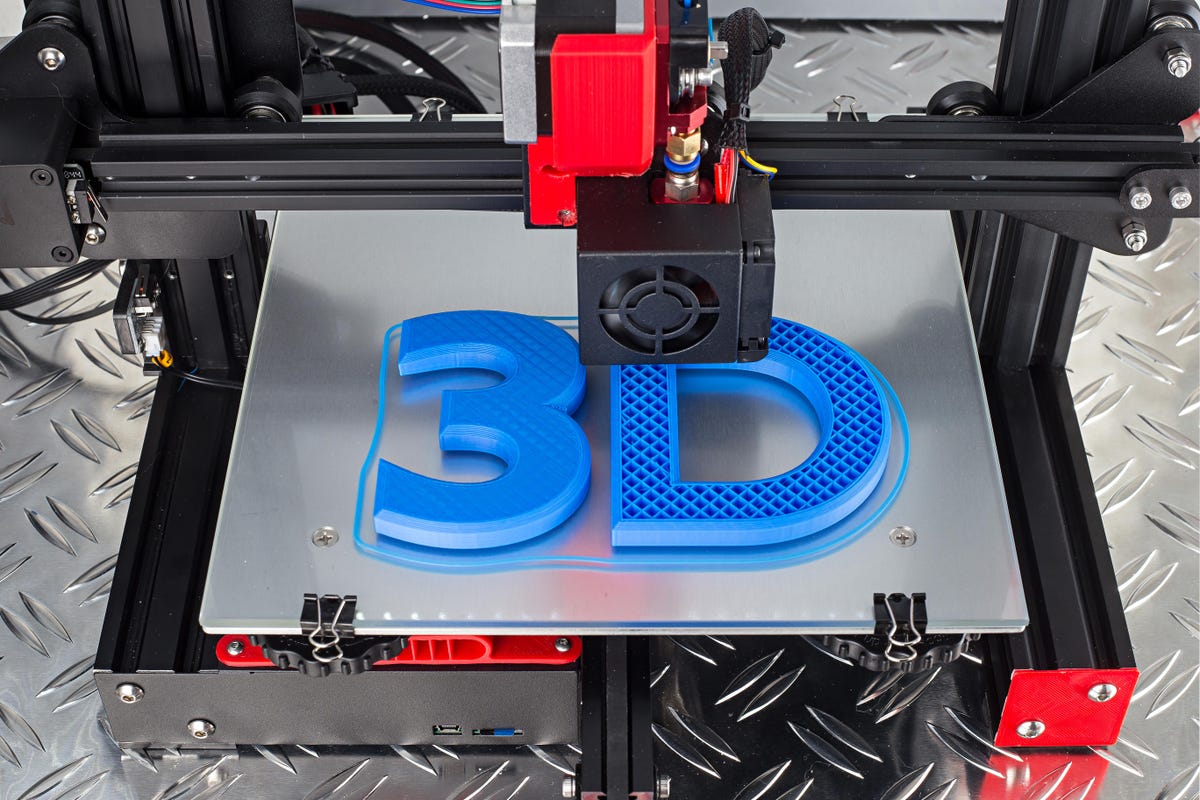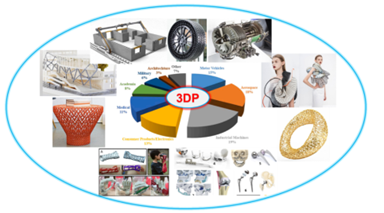3D printing technology (3D printing – 3DP) has continuously developed, is applied in almost all areas of our lives, and is considered one of the main pillars of Industry 4.0.

I. Definition
Invented in the 1980s, 3D printing technology (3D printing – 3DP) has continuously developed and been applied in almost all areas of life, from aerospace, automotive, and molding to architecture, construction, healthcare, education, and fashion. Nowadays, 3D printing technology is considered one of the main pillars of Industry 4.0.
3D printing technology is an additive manufacturing method based on the 3D design of the product. The 3D design will be converted into control data (Gcode) using slicer software (Slicer). From there, control data will be loaded into the 3D printer to create product shapes with high accuracy and details based on the initial design data.
II. Benefits and application
1. Benefits
Using 3D printing technology can provide many benefits to both individuals and businesses. Here are 6 significant benefits of 3D printing technology:
- Production speed
- Easy access & application
- Test sample quality
- Cost savings
- Creative design and freedom of customization
- Minimize waste
2. Application
Combining 3D printing technology with other manufacturing technologies is enhancing the development of the world’s industry towards smart manufacturing, where machinery and internet systems can exchange information and respond to feedback from the production management system. Besides, 3D printing technology eliminates the need for technological equipment, minimizing post-processing, material waste, and human intervention. These are essential characteristics that create the industry of the future. Thanks to 3D printing technology, manufacturers have the opportunity to increase flexibility and adapt to increasingly demanding and unpredictable market needs. It allows the creation of custom objects without the need for expensive molds and manufacturing tools. 3D printing technology is also an environmentally friendly friend, allowing the minimization of pollution impacts and playing an important role in sustainable production, saving resources, and minimizing waste.
With the principle of manufacturing products by adding materials in layers, 3D printing technology enhances and expands freedom in design, exploits the results of structural optimization algorithms, and eliminates the complexity of assembly by the unified design of assemblies into one part, reducing the life cycle time between product design, manufacturing and delivery, and significantly saving on raw material costs because the product is optimal design.

III. How to apply:
Step 1: Product design: Use CAD software to design the product before 3D printing.
Step 2: Design file preparation: Convert the design file into a 3D format, such as STL or OBJ format.
Step 3: Materials and 3D printer choosing: Choose the right material for the product and choose the 3D printer suitable for the product and material type.
Step 4: 3D printer preparation: Make sure the 3D printer is fully prepared, including loading materials and standard surfaces.
Step 5: 3D Printing: Start with the 3D product.
Step 6: Quality checking: After 3D printing is completed, check product quality and adjust if necessary.
IV. Types of 3D printing
There are many 3D printing technologies in the world, from simple to complex, from plastic materials to metals, ceramics, glass… 3D printing technologies are classified into 3 main categories:
a, FDM technology
FDM is the simplest and cheapest 3D printing technology. Also, this is the printing technology in most 3D printers on the market. Basically, an FDM printer will melt and extrude the plastic wire layer by layer to form a model.

- Advantages: FDM 3D printing technology is cheap, easy to use, and can print huge samples.
- Disadvantages: Smoothness is not high, and it is difficult to print complex patterns
- Application: FDM has a wide range of applications; almost every field can be applied well!
b, Resin Technology
This is the general name of a series of 3D printing technologies based on liquid resin ink, including SLA, DLP, and continuous 3D printing technology.

- Advantages: 3D RESIN printing technology produces products with the highest smoothness.
- Disadvantages: The resin printing process is complicated and should only be used to print small, delicate models.
- Application: Creating 3D models of jewelry, dentistry, and minature models
c, SLS technology
SLS is a printing technology that uses laser beams to shine on layers of powder (metal or polymer), causing them to melt and stick together to create the shape of an object.

- Advantages: SLS 3D printing technology is not afraid of objects with complex shapes and is the most effective full-color 3D printing technology.
- Disadvantages: The SLS printing process is expensive and requires investment in a lot of supporting equipment.
- Application: Creating models of machine parts, models, architecture, and 3D printing of human statues.
V. Metal 3D printing
Below is a popular 3D printer in the world:

Desktop Metal Studio System is one of the most popular and highly rated metal 3D printers on the market today. This 3D printer uses a metal 3D printing technology called “Bound Metal Deposition” (BMD) to create metal 3D printed products. It can 3D print with various types of metal, such as stainless steel, copper, titanium, and nickel.
Desktop Metal Studio System provides 3D printing capabilities with high precision and resolution, allowing the creation of 3D printed products with complex shapes and high precision. It is also capable of rapid 3D printing with speeds up to 16mm3/min and 3D printing sizes up to 300mm x 200mm x 200mm.
The Desktop Metal Studio System 3D Printer is designed for metal manufacturing companies, product designers and researchers. It has a higher price than 3D printers using traditional FDM or SLA technology; still, with the ability to 3D print metal, Desktop Metal Studio System is a good choice for businesses and individuals with production needs for high-quality metal products.
Our company always wishes to become a reliable partner and a leading supplier of equipment and solutions for the success of our customers. For more detailed information, please contact:
MITAS Hanoi Technology JSC
Address: 5th Floor, C’Land Building, No. 81 Le Duc Tho St., My Dinh 2 Ward, Nam Tu Liem Dist., Hanoi, Vietnam
Web: https://mitas.vn | Tel: (+84) 243 8585 111 | Email: sales@mitas.vn
The trust and support of our customers are a driving force and an invaluable asset to our company. We sincerely thank you./.
